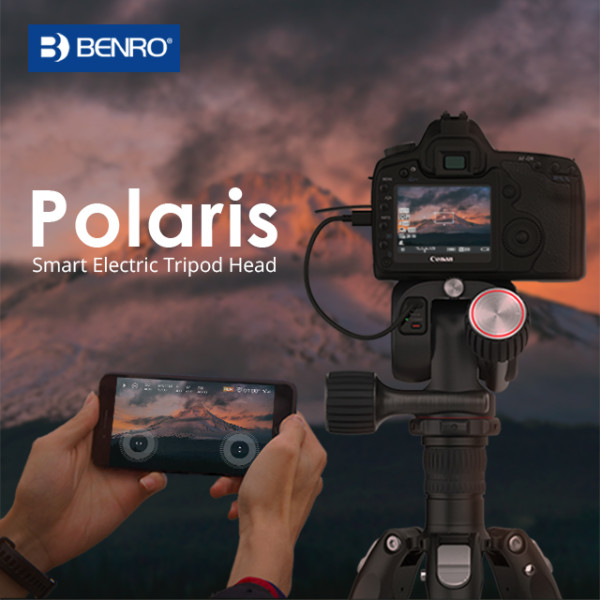
Smart Electric Tripod Head, Remote Controller, Wireless DSLR Preview & Configuration.
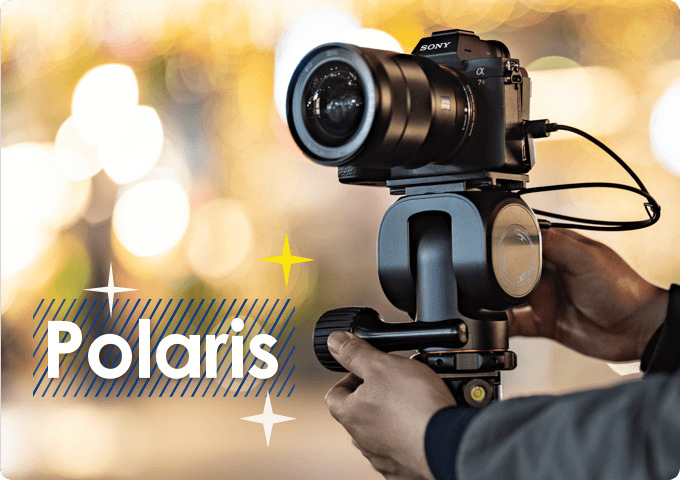

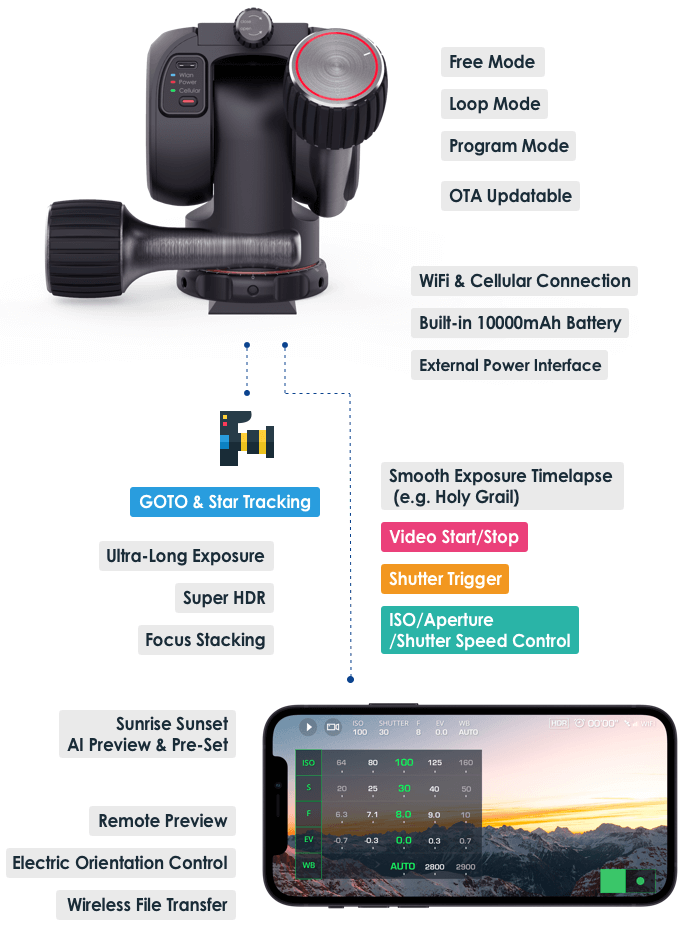
Polaris is a wireless, smart electric tripod head. What does that mean? Polaris helps photographers conveniently frame the perfect shooting angle with ease. If you are a lover of landscape and nature photography, or even astrophotography – Polaris can make your shooting efficient and uncomplicated. In addition, Polaris can automatically render photos that normally required computer processing, such as panoramic photos, time-lapses, exposure bracketing, and so on. By introducing Polaris to the world, we hope to dismantle the technical boundaries traditional photographic tripods currently face to a more progressive and intelligent stage.
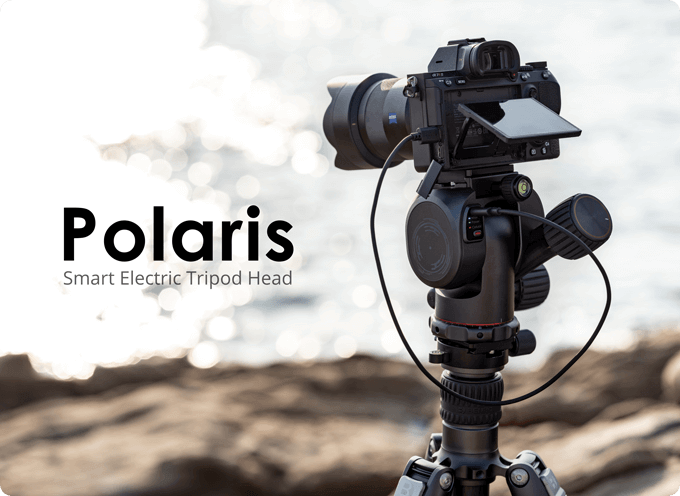
![]()
![]()

![]()

Every notable landmark seems to have one thing in common: tourists, and lots of them!
Removing tourists or any unwanted moving objects from a photo used to be incredibly slow and tedious work. With the Scene Retouching feature built into Polaris, all you have to do is to take several shots of the same scene, and Polaris will automatically remove tourists or unwanted objects from photos and finally generate a clean photo as if they were never there
![]()

Polaris makes setting up for starry sky shooting quick and easy. Normally, a long-exposure is needed to capture the brightness of stars, even on the clearest of nights. However, due to the rotation of the earth, the stars in pictures often show tailing or streaks. Before Polaris, the equatorial mount was typically used by photographers, knowing it could not rotate freely and severely limiting composition in hopes of getting a clearer image.
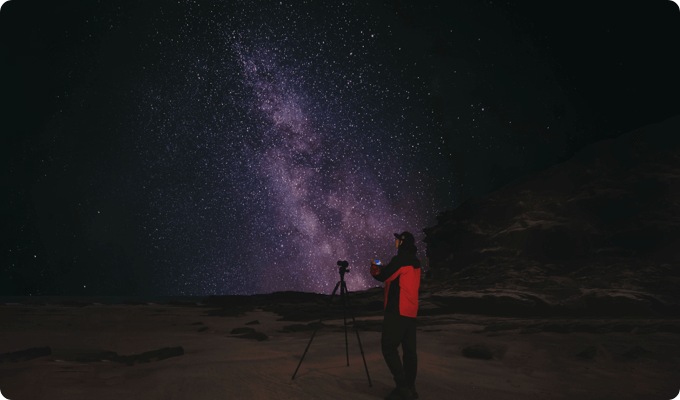
When capturing the night sky – Polaris uses the built-in GPS, compass, and astromaps to move the head precisely to prevent tailing or streaks. This feature will allow you to capture perfect shots of the Milky Way or your favorite constellations. Using the built-in features you can also adjust your shooting angle at will.
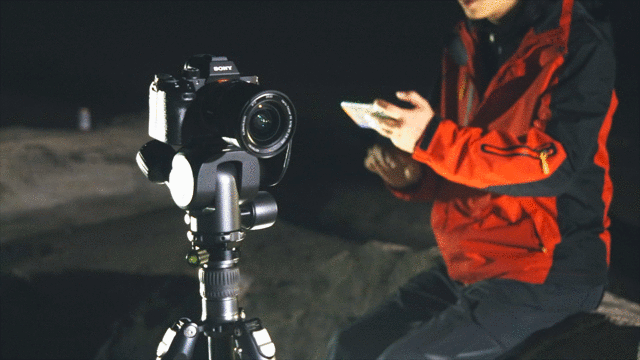
We know that most stars are very hard to spot with the naked eye, and even harder to spot when looking through a camera viewfinder. To help frame your shot – the Polaris app uses Astro maps, AI, and the sensors in your mobile phone to make framing a breeze. Just point your phone at the sky. Move it around to see every star your camera could capture. Once you see the shot – press the shutter button – Polaris will automatically rotate and begin capturing the area your phone was framing.
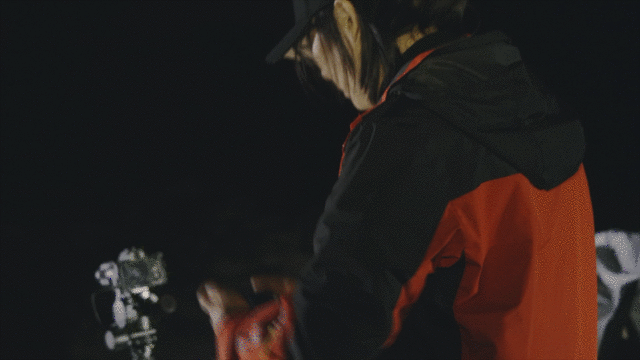
How does Polaris track stars?
> No Traditional Polar Alignment Needed.
Polaris has a built-in GPS, an accelerometer, and an electric compass. By using these in concert Polaris can get its latitude, longitude, and orientation data. With this data, the processor inside Polaris can calculate the rotation of the polar axis. This means there is no need to do a polar axis calibration – which is a critical and time-consuming step when using traditional equatorial mounts.
> Calculation And Auto Tracking
In order to enable Polaris to trace stars, we designed more inside, not only just those sensors.
Even exposures as short as 20 seconds can cause the final image to be blurry due to a mix of the earth’s rotation and the magnification effect of the camera lens. Since the rotation angle of the earth in 20 seconds is relatively small – the electric compass and GPS aren’t able to necessarily determine the change. In order to properly trace the stars and prevent streaks – a high-precision hall angular sensor inside Polaris, together with a reduction gearbox structure, can reach an extreme control precision of up to 0.01˚ (36 arc seconds) – which is equal to the amount the earth rotates in 2.5 seconds. This means that we can capture the stars with a longer exposure, and can get the same result as you would get with a 2.5-second exposure. Your shots will be clear, sharp, and leave out the blurry star trails.
>Increased Tracking Accuracy
After additional verification – the tracking accuracy of Polaris is able to be increased by four times. That is 0.0025 ° (9 arc seconds). This is achieved by increasing the deceleration ratio of the transmission structure.
we have added a visual correction function to Polaris. When you use Polaris for long exposure deep-sky shooting, Polaris will take a set of photos, each of which is a long exposure. After each photo is taken, Polaris will recognize the precise position of each star in the frame and correct for the movement/direction of the camera. This helps to avoid shooting for tens of minutes or having to continually reset positioning and restarting shots for hours. After the shooting is complete – Polaris will align and stack the photos captured to create an ultra-long exposure photo.
![]()

Being challenged to capture a landscape or subject with a day-to-night (or vice-versa) timelapse? Instead of sitting next to your camera all evening checking and adjusting exposure, and then carefully adjusting and tweaking exposure in a post-production studio for hours – use the built-in “Holy Grail” mode.
“Holy Grail” tackles this extremely technical and time-consuming scenario by automatically analyzing every photo and adjusting the exposure between every shot. Your camera can easily get perfectly exposed and smooth transitions without any manual work. Use Polaris to make your day-to-night timelapse standout!
![]()

When shooting a sunrise or sunset, photographers need to choose the most suitable shooting location and angle for the best composition, but sometimes the search takes too long. In conjunction with the mobile app, Polaris can simulate the sun’s movement, and you can compose the picture before the sun has risen or is close to being set. The composition is simulated by using the mobile phone’s accelerometer, camera, and AI. You only need to select where you want the Sun framed above the horizon and send it to Polaris. Polaris will take photos at the exact time the sun hits that desired angle.
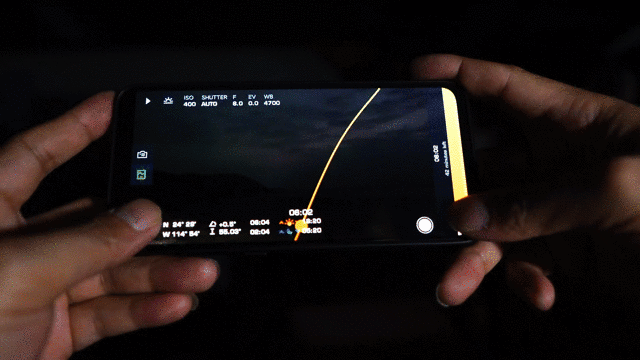
![]()

Polaris uses your camera’s autofocus abilities to the max. The smart controller can take a set of photos with different focal points, and using the AI can synthesize these into photos without blur. This means that every photo will have perfect focus throughout the image, and you can get creative with it or choose your optimal focal point later.

![]()

Both RAW and HDR files are designed to preserve details, but these technologies sometimes fail to meet requirements during long exposures. Polaris will review each photo after an exposure is complete, and adjust the camera parameters if needed. If the photo is partially overexposed or underexposed – Polaris will shoot until every part of the image is properly exposed, synthesizing one perfect picture for you!
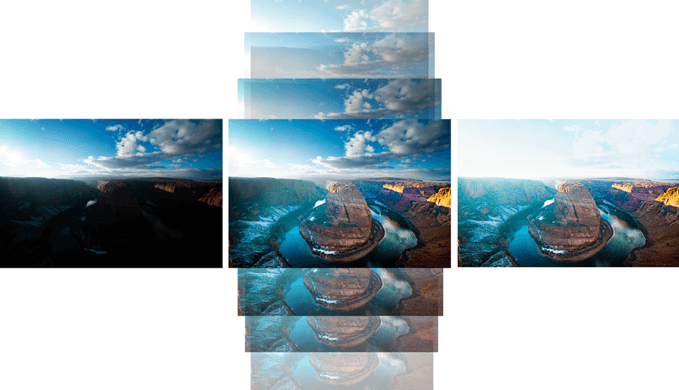
Multi Exposing & Auto Stacking
Let the camera automatically take multiple shots and then auto stack them to compose a bright and sharp night scene.
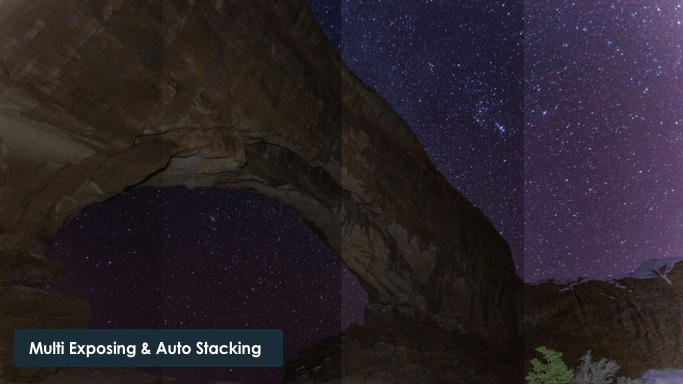
![]()

Timelapse photography is one of the more eye-catching shots to integrate into a video, and they help immensely in storytelling. Polaris uses the smartphone app to make setting up the interval between shots, duration, and exposure easy. Polaris can even adjust the timelapse settings during capture to ensure that the timelapse comes out exactly as you hoped it would.
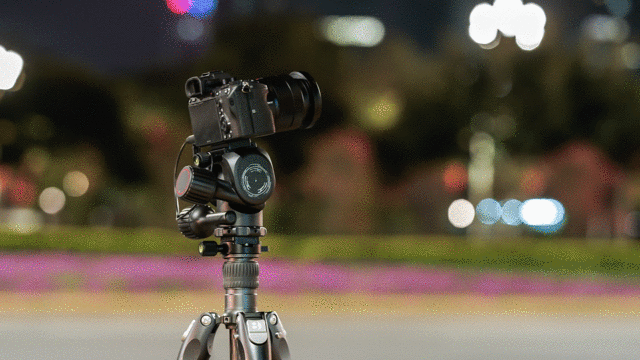
Dynamic Timelapse
Polaris allows you to bring even more creativity into your timelapse photography. Thanks to the built-in programming functions, everything about your camera is controllable. Use this expanded ability to record timelapse videos with dynamic changes in the direction of view and speed. At the same time – dial in your ISO, aperture, shutter speed, and even your focal length from anywhere.
During the capture of time-lapses, you can freely set the key frames of a timelapse video to highlight the subject by changing the ramping up or slowing down speed.
Polaris also has an exposure smoothing function. This avoids overexposed or underexposed scenes when shooting time-lapse videos in manual mode. This function also avoids jitters in the brightness of timelapse videos due to exposure changes over time.
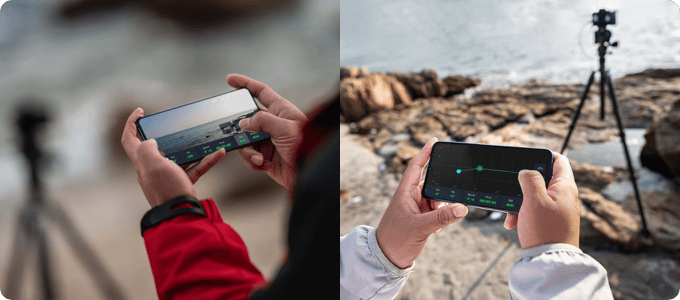
![]()

Before Polaris, you’d need to take multiple photos by continuously turning the camera manually, unload the SD card, and then import the photos into the computer to load onto a stitching program. When shooting a large number of photos for a high-resolution panorama, this can be a heavy and time-consuming task. Plus, you won’t know the outcome of the pano until running them through the program. With the help of Polaris, automatic panoramic shooting can be realized and reviewed in near real-time. After the automatic shooting is completed, the stitched pano can be checked through the app on your phone.
Customize Your Panorama
Polaris supports automatic multi-line panoramic photo shooting, you can choose the number of rows and columns of the photo – everything else is done automatically. This mode also supports enhanced exposure. Polaris can take multiple exposures of each section of the panorama to avoid under or overexposure in any section of the synthetic panorama.
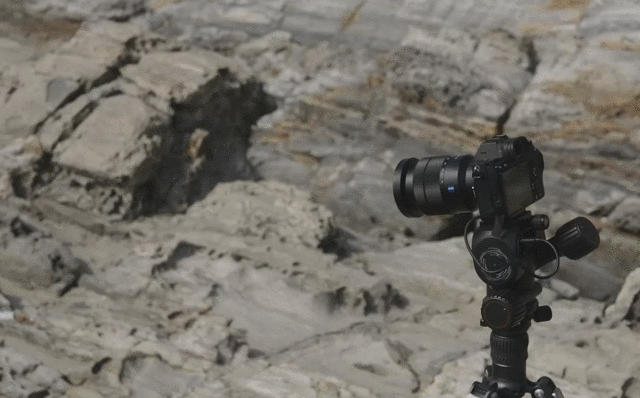
![]()

Polaris is more than just an electric tripod head or camera controller. Taking these concepts to the next-level, Polaris takes the rotation capabilities of geared heads and combines them with AI and the ability to remotely control and program shooting parameters. What does this mean? It means that movements can be preprogrammed, camera settings can be tuned and dialed-in during rotation to get the perfect shot, and AI can change exposure while capturing a full-day motion timelapse to make sure nothing is blown out. This not only brings convenience, but it can reduce your workload while trying to capture the ideal shot. What used to be complicated shots are now made much simpler thanks to Polaris.
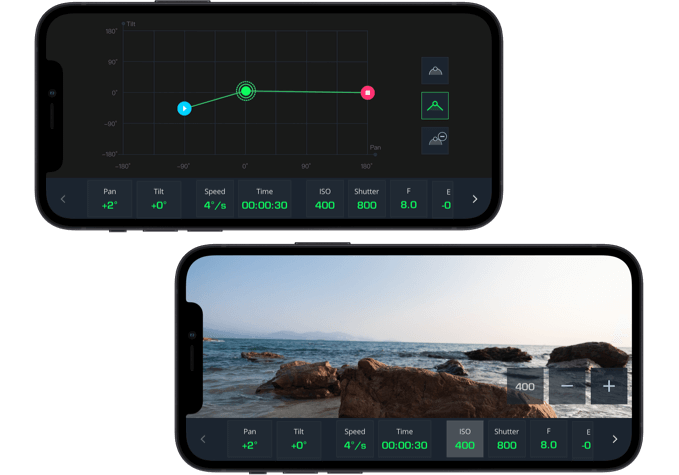
Within the app, we have worked to make setting up the exact shot you want to capture quick and hassle-free. We did this by introducing an easy-to-use graphic interface with adjustable controls. Through this interface, you can add custom control nodes. Each control node can individually set the parameters of the camera, the time interval between each shot, and the precise angle of the camera, or the rotation speed of the head. By making setup stress-free, we put no limits on where your inspiration can take you.
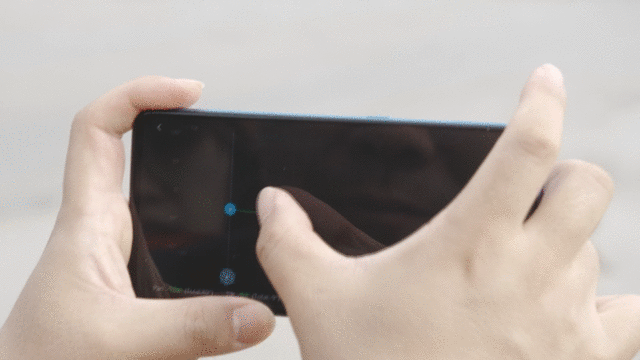
![]()

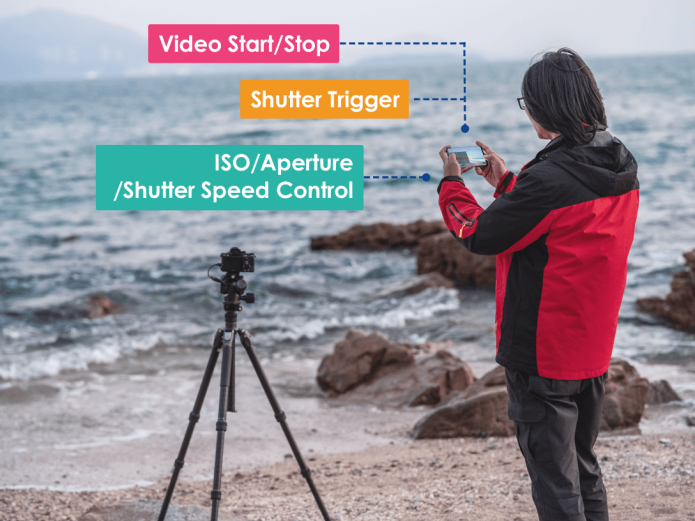
With Polaris, there is no need to be near the camera all the time. You can shoot the sunrise and sunset while staying warm in your car , and you can sit on your sofa and capture images of the starry sky. There are two versions of Polaris. One version has integrated Wi-Fi remote control. The other adds cellular capabilities to extend your control distance to any place within network coverage.
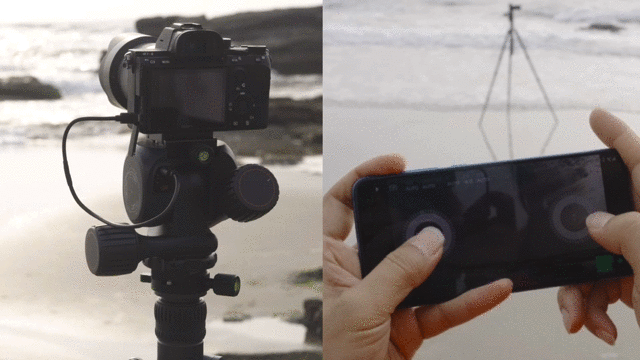
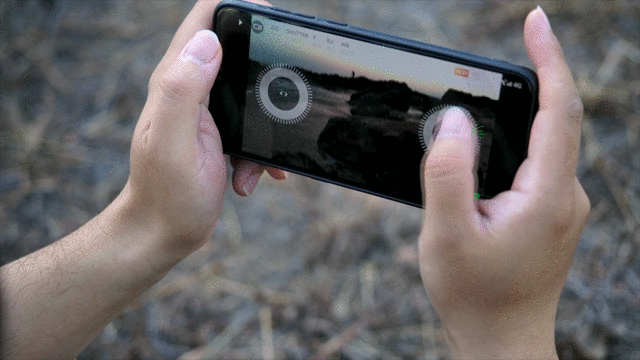
The supported frequency bands of Polaris Cellular version:

![]()

Every photographer wants to see their creation the second that shooting is completed. With Polaris’s wireless connection and app, you can transfer files right to your phone for preview and inspection without a card reader and computer. You can even process and send these shots to your favorite social platforms.
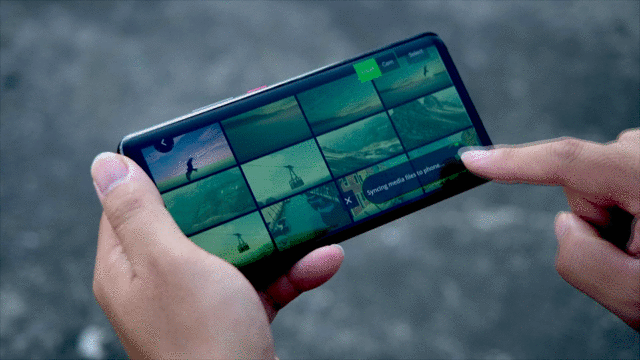
![]()
![]()
Polaris can remotely send images after they’re captured – you’ll even get a notification after the shot is complete.
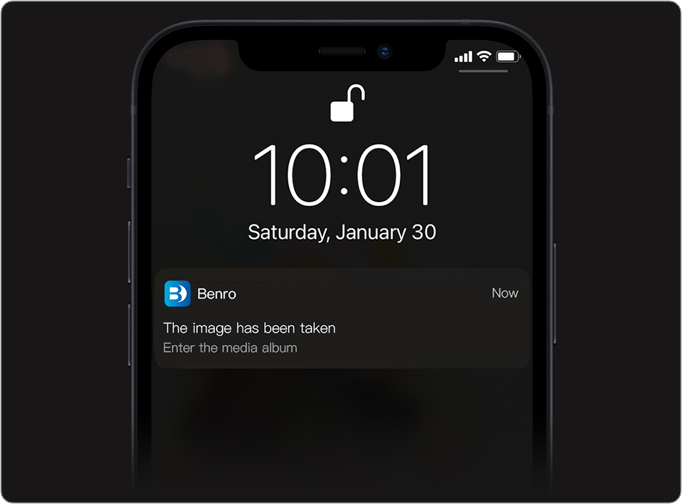
![]()

Since Polaris is mainly comprised of aluminum alloy and stainless steel, its ensured to work in even the harshest environments. Adding to this, Polaris has also rated to IPX6 water-resistant performance, allowing the head to work even in torrential downpours.
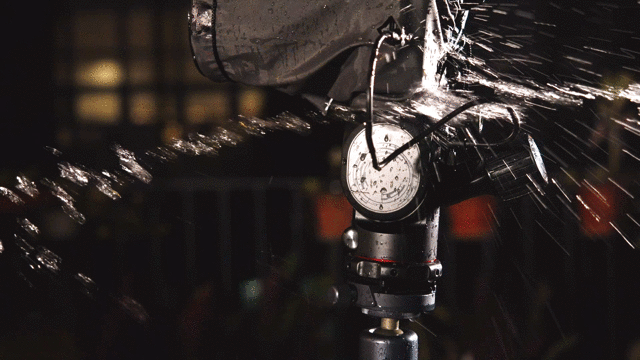
![]()
![]()
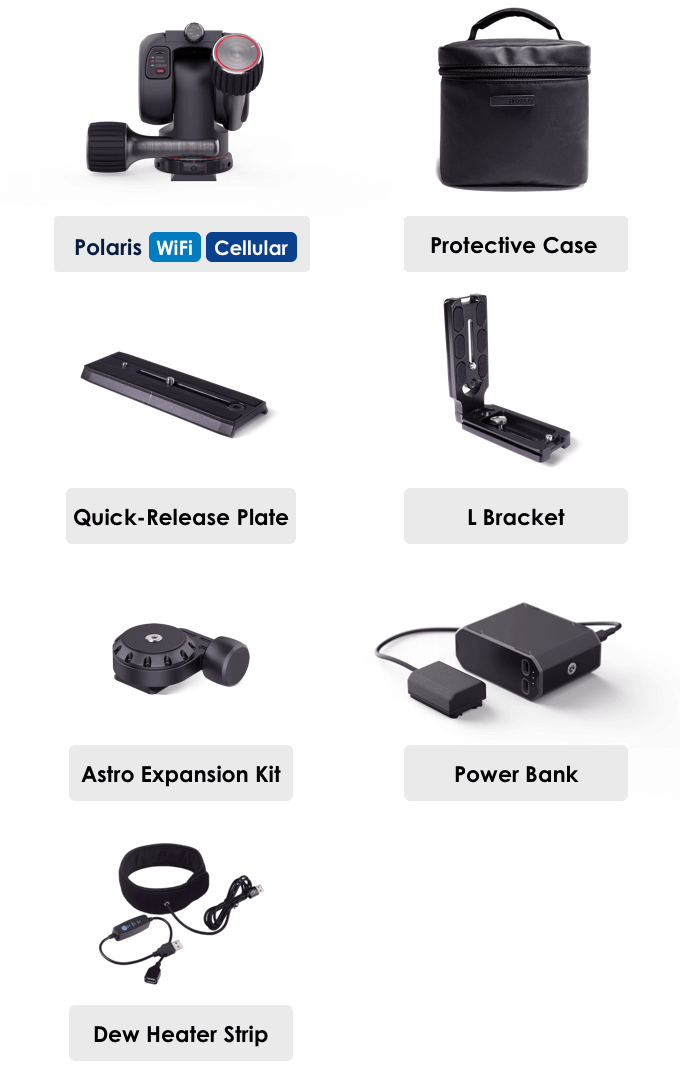
Polaris Astro Expansion Kit
Through its modular design, Polaris takes into account the needs of different scenarios while maintaining portability. With the Timelapse edition, Polaris uses two axes to achieve your needs while shooting time-lapse, panoramas, and ordinary photos. With the Astro edition, when you need to track stars or control the rotation in three directions, you can install an enhancement kit on the Polaris and turn it into a three-axis electronic tripod head. Rapid installation and uninstallation are realized through a quick-release board, making it convenient. Furthermore, additional expansion is planned for accessories around the quick release board.
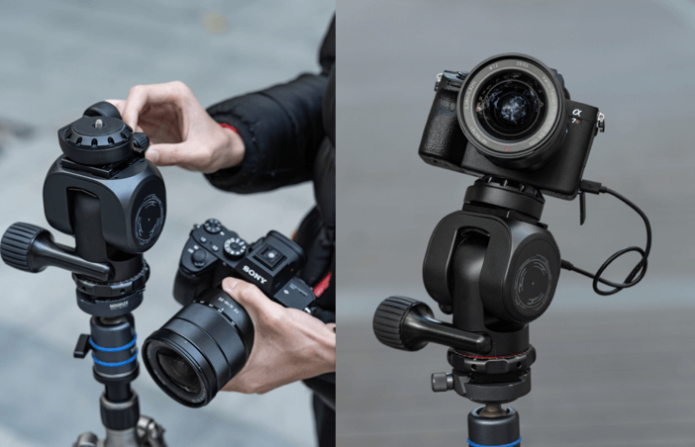
Power Bank
The type of lens: Dummy Battery; Capacity: 20000mAh
Two USB Type-C ports are used to power Polaris or other devices. Two DC ports can power the camera through the camera power supply adapter. A 1/4 screw port allows it to be easily fixed on a tripod and other equipment.
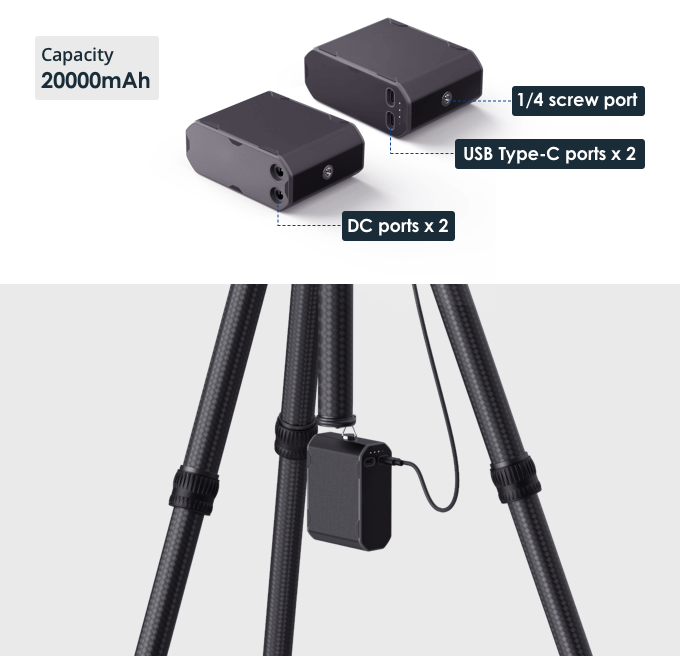
Dew Heater Strip
Prevents condensation by warming up the lens on a camera or telescope.
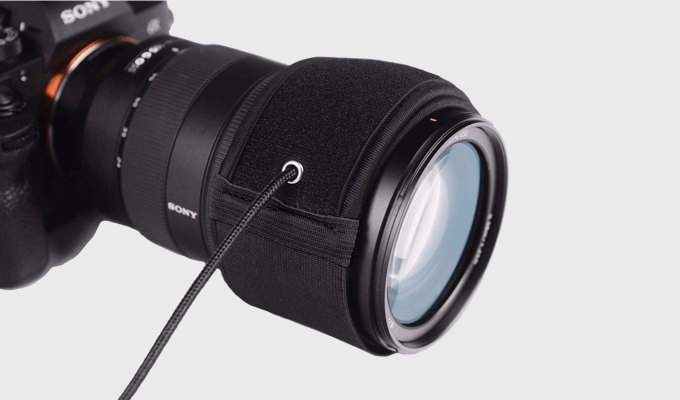
![]()

Note that if your camera is not on the list, you may not be able to obtain image capture or use live-view and remote configuration functions through the Polaris app. You can still use Polaris as a smart tripod head for star tracking, capturing time-lapses, panoramas, etc., but you be required to manually control the shutter during this process or set a shutter time.
Click the link below to see the Polaris camera compatibility list, the list will continue to be updated.
![]()
![]()
Ready to elevate your shots? Click ‘Back This Project’ and choose your reward.
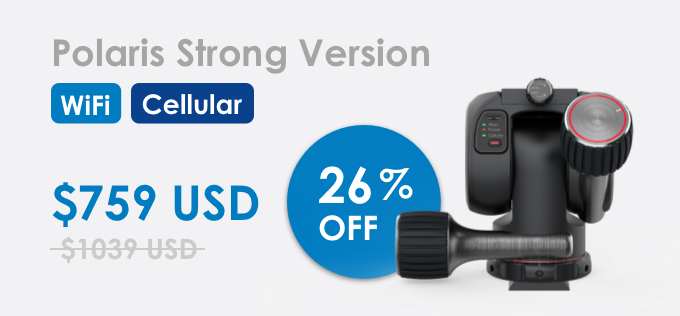
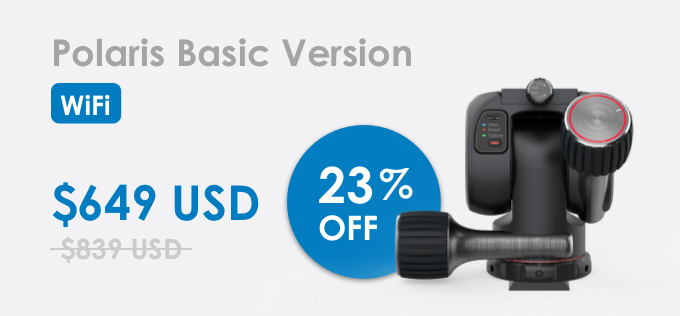
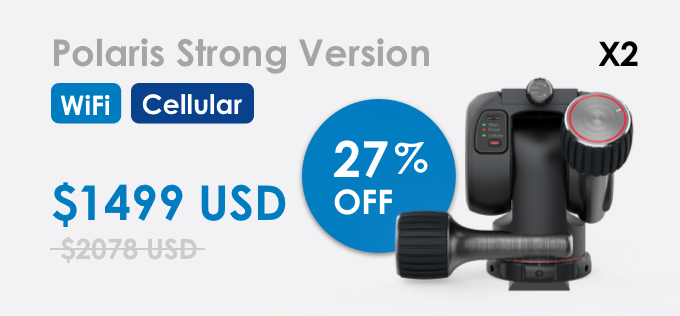
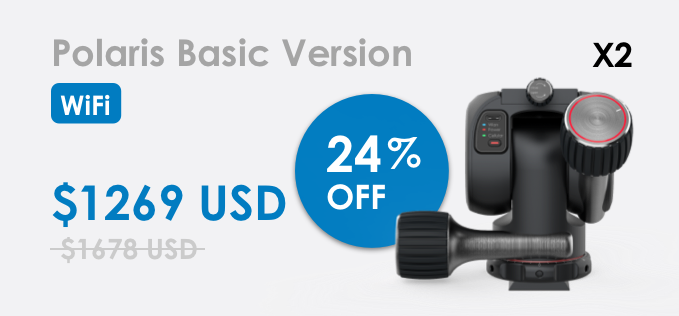

![]()

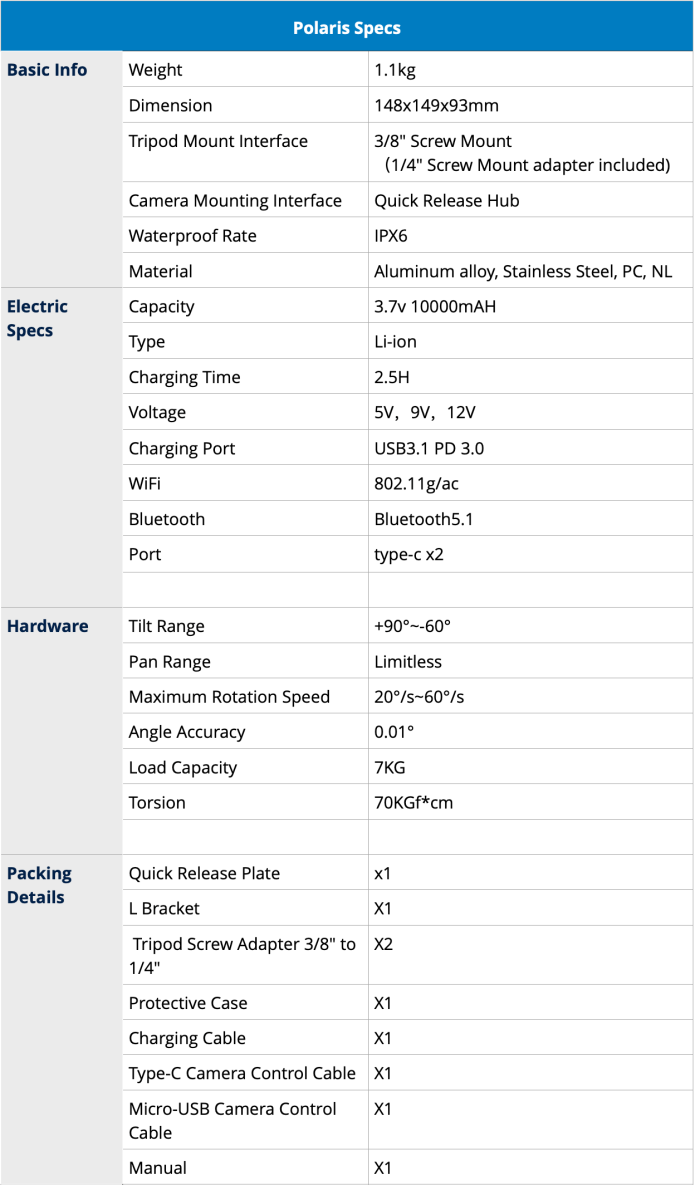
![]()
![]()
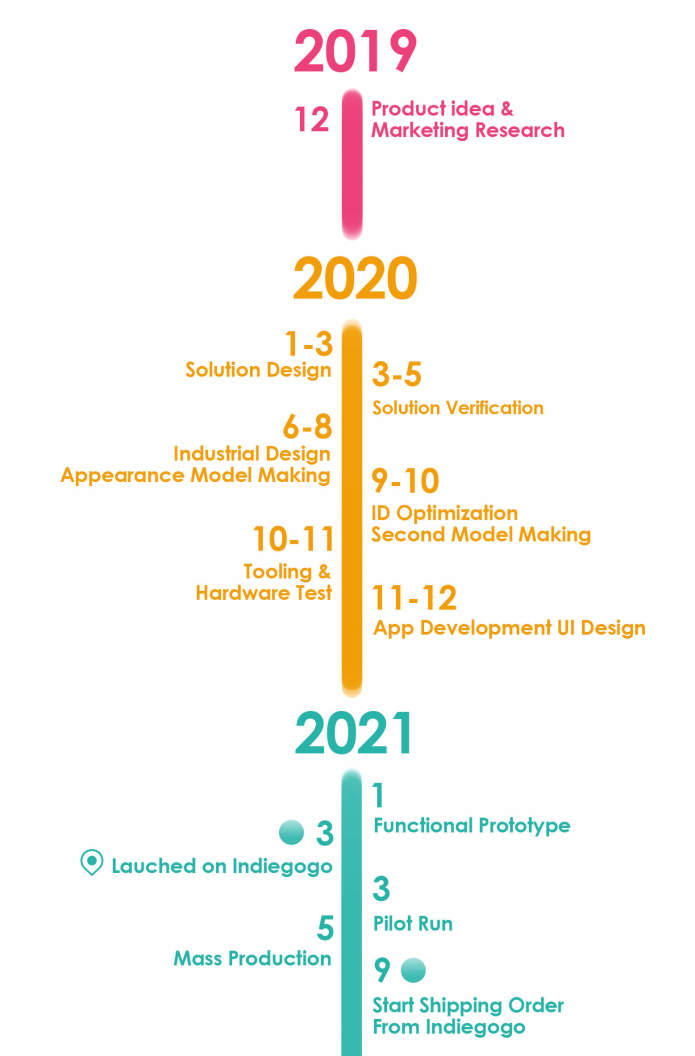
![]()

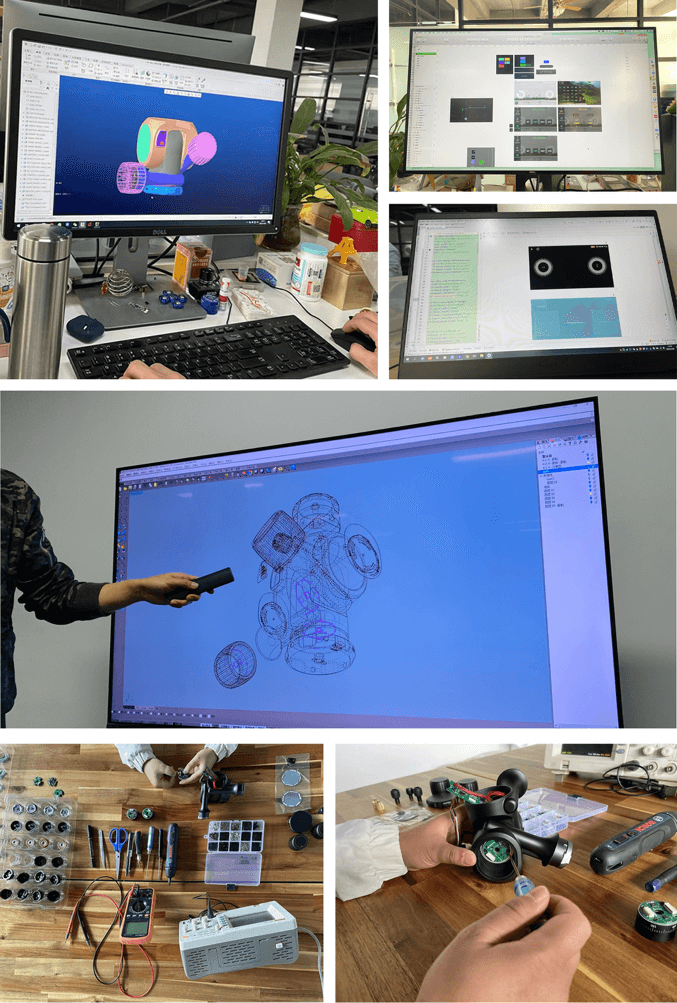
Risks and challenges
When compared to many “traditional” Indiegogo projects, Benro stands out. We are an established company in the professional photography world. In fact, we’ve been in the game for 26 years, and have built our reputation on building solid support gear.
So, what are the risks? This is one of Benro’s first jumps into integrating electronics with our support gear, and there can always be unforeseen challenges that pop up.
A few promises: First – the world is a little funky right now. If there are unforeseen problems, we solemnly promise to provide transparency and work with our backers to solve the issue.
Forecasting Risk: We’ve done our very best to forecast demand and create a solid production plan. We’ve learned a lot from the past couple of decades, but sometimes forecasts don’t always hit the mark. And sometimes they do and overshoot them by a lot. Should we be way off on projections – we’ll let you know why and make it right as quickly as possible.
Shipping Risk: Global shipping and warehousing logistics can be mind-boggling. We have gotten pretty good at it, but even we aren’t immune to weather, port congestion, and other uncontrollable factors. Please keep this in mind! Trust us – we want to get Polaris in your hands as soon as possible.
Acts of God: Could COVID-19 or something else throws us another curveball? You bet. Whatever happens, we’ll get through it together.





